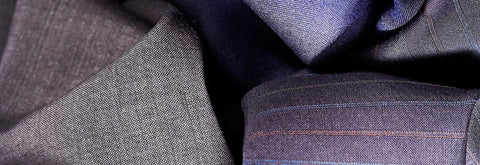The Beauty Of Mohair
History of mohair'Angora' mohair comes from a goat originating in Ankara in Asia Minor. (An animal dating back to biblical days. Mention is made of the use of mohair at the time of Moses, around 1571-1451 BC)
By the early nineteenth century, mohair had become a valuable commodity in Europe in order to meet increasing demand, the Turks crossed the Angora goat with more common stock to increase the poundage of saleable hair. As a result the breed changed in size and appearance into the animal we recognise today.
Although various attempts have been made to set up Angora production in Europe (a pair of goats was imported by Charles V as early as 1554 and in the eighteenth century goats were imported to Spain and France) it remains relatively small.
Imports to South Africa (from 1838) were more successful. So much so that today South Africa produces over 60% of the worlds 5 million kg production of mohair.
Why mohair?
Insulation - Mohair's fibres do not conduct heat like wool and provides good insulation, even when wet.
Durability - Mohair can be twisted without damage to the fibre: it is the most durable of all animal fibres.
Strength - Mohair is stronger than steel of the same diameter
Resistance to soiling - the smooth scales stop dirt being trapped in the fabrics.
Shrink resistance - Mohair fabrics shrink much less than wool because mohair's smooth fibres do not felt.
Elasticity - Mohair is very elastic, it can be stretched up to 30% and will spring back to shape: mohair garments resist wrinkling, stretching or sagging.
Moisture transfer - Mohair easily absorbs and releases moisture, moving perspiration away from the skin. It is comfortable to wear in cold and hot climates.
Lustre - One of mohair's most important qualities is its ability to take dye and to display brilliant colours that resist fading by time or hard wear.
Lightweight - Mohair's smooth fibres can be made into fabrics that have a cooling effect making it perfect for summer garments.
Non-flammability - mohair will not burn unless it is exposed to a direct flame.
Easy to wash - mohair does not felt or shrink

Types of mohair
On the goat mohair grows rapidly at a rate of around 2cm per month and is generally shorn from animals twice a year. Fibres can range from 23 microns in mean diameter at the first shearing to as much as 38 microns in older animals.
Different fibres from different animals make mohair suitable for a wide range of different uses. Kid mohair (from 6-12 month old goats) is the softest and finest making it ideal for luxury suiting. Young goats (18 months) produce mohair ideal for other suiting whereas mohair from adult goats (24 months+) is perfect for coating and rug manufacture.
For more information on mohair fabrics please contact: William Halstead: http://www.williamhalstead.co.uk/contact/the-mill/
For information about tailoring using these fantastic fabrics why not ask Cotswold Tailor to see our full range of mohair cloths.